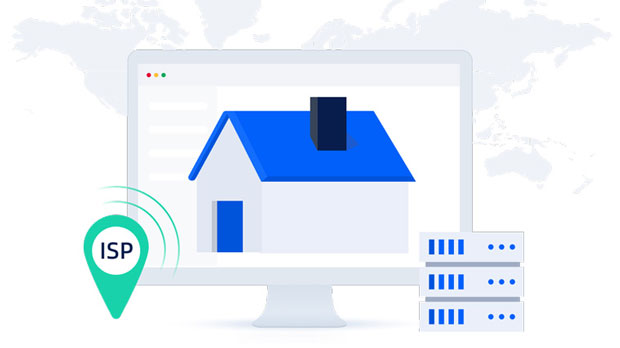When it comes to using socks5 proxy services, reliability and security are key factors that can greatly impact your online activities. But how can you tell if a SOCKS5 proxy provider is trustworthy? There are several important aspects to consider before committing to a service, including its security features, performance, privacy policies, and customer support. This article provides an in-depth analysis of what makes a SOCKS5 proxy provider reliable, ensuring you can make an informed decision based on your specific needs. Whether you're using socks5 proxies for anonymous browsing, online gaming, or data scraping, understanding these critical elements will help you avoid unreliable services that could compromise your privacy or performance. 1. Security Features: The Foundation of a Reliable SOCKS5 ProxyOne of the most important aspects to assess when determining the reliability of a SOCKS5 proxy provider is its security features. A SOCKS5 proxy works by acting as an intermediary between you and the internet, which means that the service will be privy to your data. If the provider does not take adequate security measures, your data could be exposed to third parties, putting your privacy at risk.Encryption: While SOCKS5 itself does not encrypt your traffic by default, a reputable service provider should offer the option to use encryption or provide other secure tunneling methods like SSL/TLS. This adds an additional layer of security, ensuring that your data remains private even when transmitted over unsecured networks.Authentication: Ensure the SOCKS5 proxy provider supports secure authentication methods. This can prevent unauthorized users from accessing the proxy service and ensure that your connection is only used by you or your authorized devices. A provider that offers username/password authentication or supports multi-factor authentication (MFA) is typically more secure than one that does not.IP Leak Protection: An important concern when using proxies is the potential for IP leaks. IP leakage occurs when your actual IP address is exposed despite being connected to the proxy. A trustworthy provider should have built-in safeguards to prevent IP leaks, DNS leaks, and WebRTC leaks, which could undermine your anonymity.2. Performance and Speed: Assessing the Quality of ServiceThe quality of the proxy service is determined largely by its performance and speed. A reliable SOCKS5 proxy provider should offer fast connection speeds and minimal latency. Poor performance can significantly impact your online experience, whether you're browsing the web, streaming content, or engaging in online gaming.Server Locations and Load: A wide selection of server locations gives you more flexibility and helps ensure low-latency connections. Additionally, server load is a key factor in performance. A provider with a high number of servers and the ability to manage load distribution will typically deliver faster, more consistent performance.Bandwidth Limitations: Many SOCKS5 providers impose bandwidth caps or restrictions, which can severely affect your experience, especially if you require high volumes of data transfer. It’s essential to verify whether the service has any bandwidth restrictions and ensure that the provider offers unlimited or at least sufficient bandwidth for your intended use.Latency and Ping: For activities such as gaming or real-time communication, low latency and ping are essential. A reliable SOCKS5 proxy provider will have servers located in regions close to your geographical location, reducing latency and providing a smooth experience.3. Privacy Policy: Ensuring Your Data Remains SafeAnother critical aspect to assess is the provider's privacy policy. Since SOCKS5 proxies can handle sensitive data, understanding how your data is managed is crucial.No-logs Policy: A trustworthy provider will have a strict no-logs policy, meaning they do not store any data related to your browsing activity, connection times, or IP addresses. This ensures that even in the event of a data breach or legal inquiry, your information remains private.Jurisdiction: The location where the proxy provider is based can affect your privacy. Some countries have data retention laws that may require service providers to store user data for a specific period. A provider based in a privacy-friendly jurisdiction, such as countries with strong data protection laws or outside the reach of major surveillance alliances, is typically a safer choice.Transparency: Reputable SOCKS5 providers will be transparent about their data collection practices and the steps they take to protect your privacy. They should provide clear and understandable terms of service and privacy policies that outline how your data is handled and what protections are in place.4. Customer Support: Access to Help When You Need ItEffective customer support is another important indicator of a reliable SOCKS5 proxy provider. A provider that offers strong support can resolve issues quickly and effectively, ensuring that your service remains functional at all times.Availability and Response Time: Ensure that the provider offers 24/7 customer support. Proxy-related issues can occur at any time, and having access to knowledgeable support staff who can resolve your problems promptly is essential. Look for providers who offer multiple communication channels, such as live chat, email, or ticketing systems.Knowledge Base and Documentation: A helpful provider will have a comprehensive knowledge base or FAQ section that can help you troubleshoot common issues on your own. This can save time and allow you to resolve minor problems without needing to contact support.User Feedback: Researching customer reviews and feedback can give you insights into the quality of support a provider offers. Look for consistent praise for quick resolution times and helpful responses, as these are signs of a reliable service.5. Transparency and Reputation: Trusting the ProviderA reliable SOCKS5 proxy provider should have a transparent track record and a solid reputation in the industry. Trustworthy providers are open about their business practices, technical infrastructure, and privacy policies.Third-Party Audits and Reviews: One way to gauge the reliability of a provider is to see if they have been audited by independent third parties. These audits can verify the claims the provider makes regarding privacy, security, and data protection. Additionally, reputable providers tend to have positive reviews and testimonials from independent sources, which can give you more confidence in their service.Reputation within the Community: Trustworthy proxy providers often have a solid reputation within the online privacy or tech community. Look for forums, blogs, or online discussions where users share their experiences with different SOCKS5 providers. A provider with a history of reliable service and positive user experiences is more likely to be trustworthy.6. Pricing and Value: Assessing Cost vs. ServiceWhile price shouldn't be the sole determining factor, it’s important to ensure that the provider's pricing is reasonable in relation to the features and quality of service they offer.Reasonable Pricing: A reliable SOCKS5 provider offers competitive pricing that aligns with the service provided. Be wary of providers offering overly cheap services, as these could cut corners in terms of security, performance, or customer support.Money-Back Guarantee: Reputable providers often offer a money-back guarantee or a free trial period. This allows you to test their service and confirm that it meets your needs before committing to a long-term plan. A money-back guarantee is also an indication that the provider is confident in their service quality.Payment Options: Check whether the provider offers flexible payment options, such as monthly, quarterly, or annual plans, and whether they accept anonymous payment methods (e.g., cryptocurrency). This flexibility can be an important factor depending on your privacy preferences.Conclusion: Making an Informed DecisionChoosing a reliable SOCKS5 proxy service is crucial for maintaining your privacy, security, and performance online. By considering key factors such as security features, performance, privacy policies, customer support, and the provider's reputation, you can make an informed decision that aligns with your specific needs. Always take the time to research the provider thoroughly before making a commitment, and prioritize those that offer transparency, strong customer support, and a clear dedication to user privacy.
Dec 31, 2024






















































